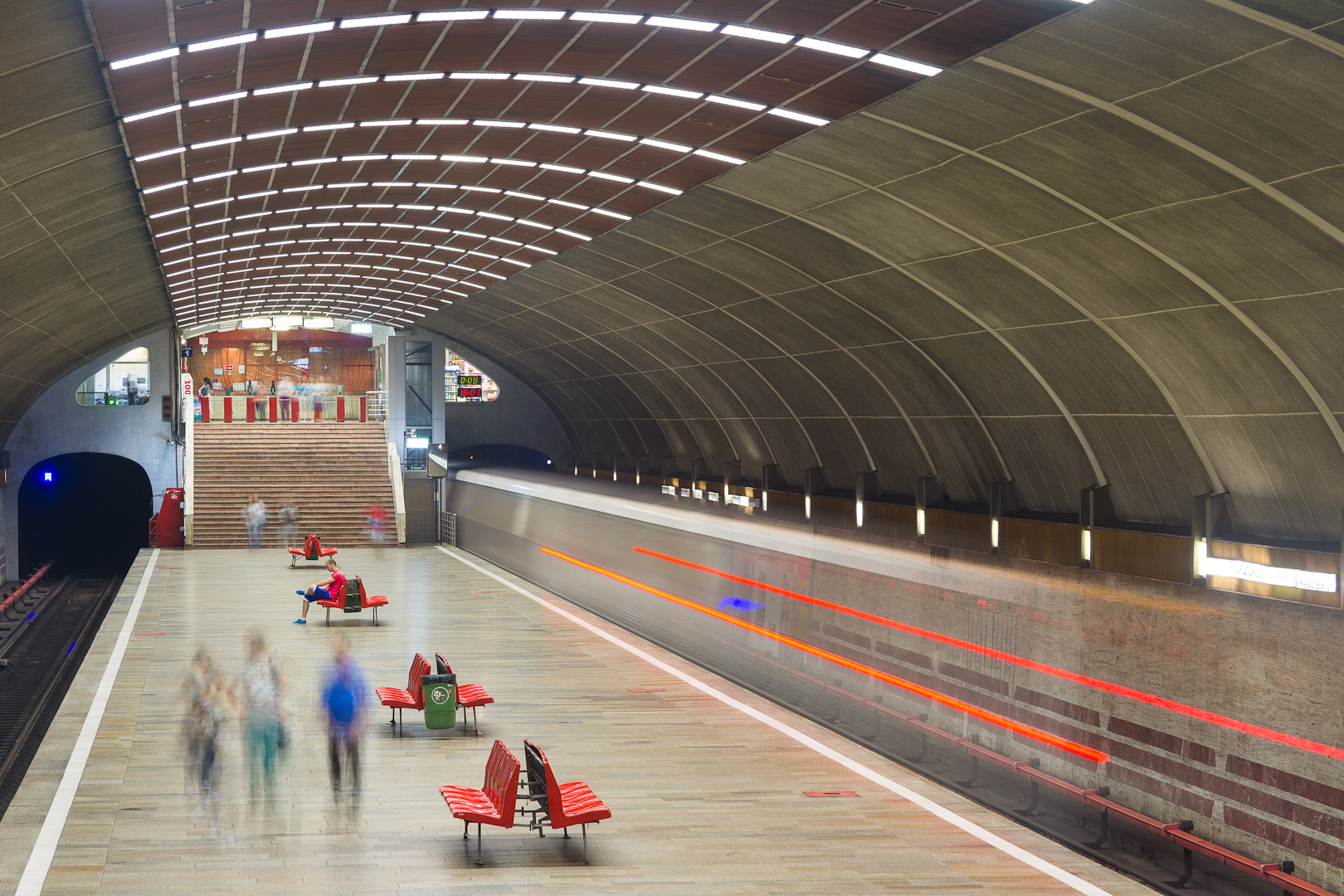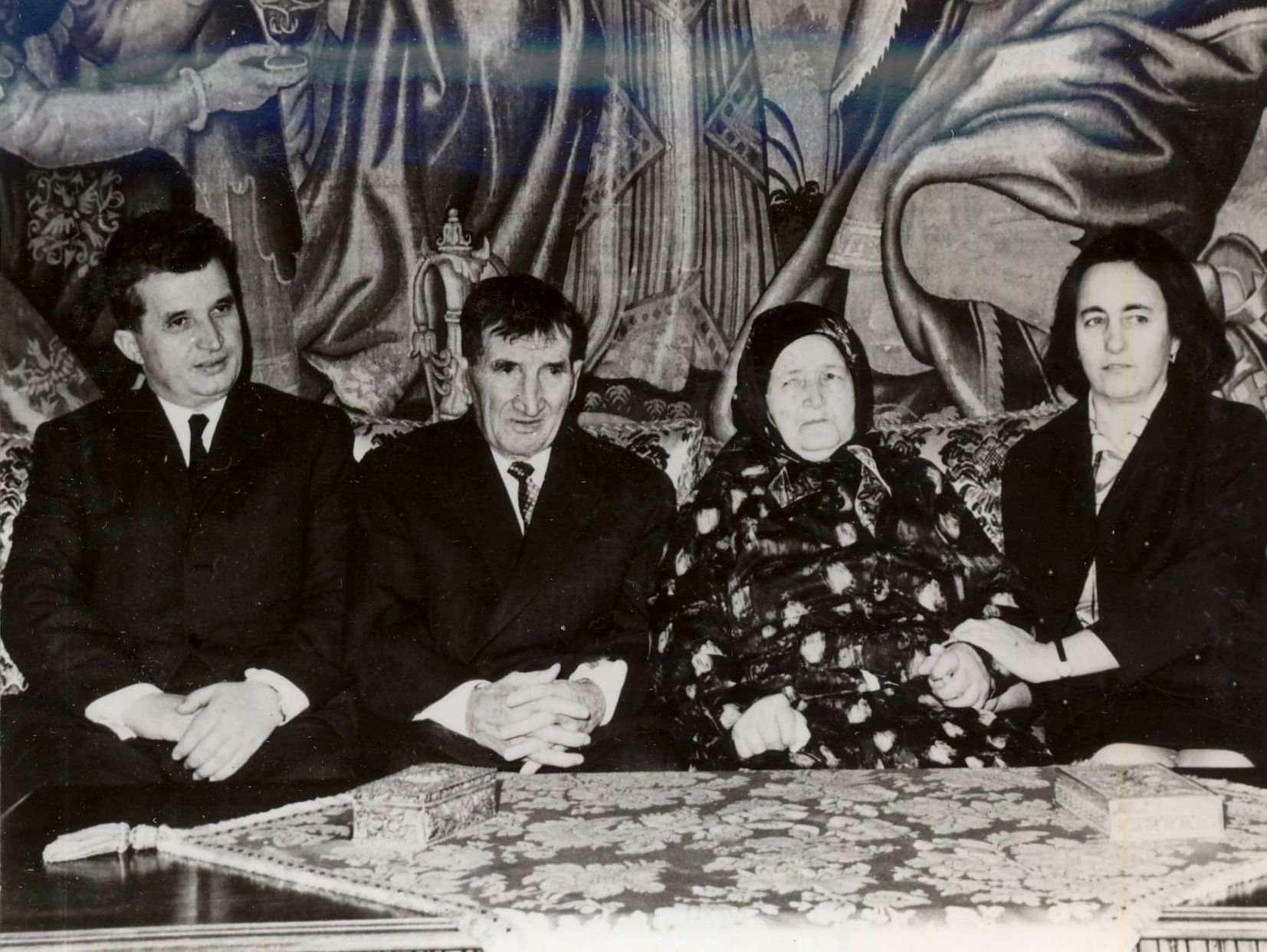|
Drumul Taberei
Drumul Taberei (, ''The Camp Road'') is a neighbourhood located in the south-west of Bucharest, Romania, roughly between Timișoara Avenue (south of Plaza România and the Cotroceni Railway Station) and Ghencea Avenue, neighboring Militari to the north, Panduri to the east and Ghencea and Rahova to the south and south-east. It is one of the few examples of successful urban planning during Communist Romania, despite it being built in the Eastern European tradition of "dormitory neighborhoods". This success is mostly due to the unique approach of the architects and planners to the concept of high-density urban living, an approach that was not used elsewhere in Bucharest. History The neighbourhood was built starting with Stalinist style apartments in the 1950s, that evolved with 4 to 10 storey tower blocks apartments built from 1960 to 1974, on former agricultural fields and marshland, using an old road as a backbone. It was called ''Road of the Camp'' because Tudor Vladimirescu s ... [...More Info...] [...Related Items...] OR: [Wikipedia] [Google] [Baidu] |
Bucharest Quarter Drumul Taberei
Bucharest ( , ; ro, București ) is the capital and largest city of Romania, as well as its cultural, industrial, and financial centre. It is located in the southeast of the country, on the banks of the Dâmbovița River, less than north of the Danube River and the Bulgarian border. Bucharest was first mentioned in documents in 1459. The city became the capital of Romania in 1862 and is the centre of Romanian media, culture, and art. Its architecture is a mix of historical (mostly Eclectic, but also Neoclassical and Art Nouveau), interbellum ( Bauhaus, Art Deco and Romanian Revival architecture), socialist era, and modern. In the period between the two World Wars, the city's elegant architecture and the sophistication of its elite earned Bucharest the nickname of 'Paris of the East' ( ro, Parisul Estului) or 'Little Paris' ( ro, Micul Paris). Although buildings and districts in the historic city centre were heavily damaged or destroyed by war, earthquakes, and even ... [...More Info...] [...Related Items...] OR: [Wikipedia] [Google] [Baidu] |
Romanian Revolution
The Romanian Revolution ( ro, Revoluția Română), also known as the Christmas Revolution ( ro, Revoluția de Crăciun), was a period of violent civil unrest in Romania during December 1989 as a part of the Revolutions of 1989 that occurred in several countries around the world. The Romanian Revolution started in the city of Timișoara and soon spread throughout the country, ultimately culminating in the drumhead trial and execution of longtime Romanian Communist Party (PCR) General Secretary Nicolae Ceaușescu and his wife Elena, and the end of 42 years of Communist rule in Romania. It was also the last removal of a Marxist–Leninist government in a Warsaw Pact country during the events of 1989, and the only one that violently overthrew a country's leadership and executed its leader; according to estimates, over one thousand people died and thousands more were injured. Following World War II, Romania was placed under the Soviet sphere of influence in 1947 with Communist rul ... [...More Info...] [...Related Items...] OR: [Wikipedia] [Google] [Baidu] |
Bucharest Metro
The Bucharest Metro ( ro, Metroul din București) is an underground rapid transit system that serves Bucharest, the capital of Romania. It first opened for service on 16 November 1979. The network is run by Metrorex. One of two parts of the larger Bucharest public transport network, Metrorex has an average of approximately 720,000 passenger trips per weekday (as of 2018), compared to the 1,180,000 daily riders on Bucharest's STB transit system. In total, the Metrorex system is long and has 64 stations. History The first proposals for a metro system in Bucharest were made in the early part of the 20th century, by the Romanian engineers Dimitrie Leonida and Elie Radu. The earliest plans for a Bucharest Metro were drafted in the late 1930s, alongside the general plans for urban modernization of the city. The outbreak of World War II, followed by periods of political tensions culminating with the installation of communism, put an end to the plans. By 1970, the public transport ... [...More Info...] [...Related Items...] OR: [Wikipedia] [Google] [Baidu] |
Băneasa
Băneasa () is a borough () in the north side of Bucharest, in Sector 1, near the Băneasa Lake (). Like all north-side districts of Bucharest, it is relatively sparsely populated, with large areas of parkland. Bordering on Băneasa Forest, Băneasa has the Aurel Vlaicu International Airport, used mainly by low-cost carriers, and is home to Zoo Băneasa, the Băneasa railway station, and the Băneasa Shopping City. In the 2000s, the area has become increasingly upmarket, due to the construction of various luxury apartment developments in and around it (as are those in the Pipera-Tunari area). It is also home to many villas constructed before the 1930s that were refurbished in the 1990s and 2000s. Băneasa is linked by RATB bus lines to the Bucharest city center. There is currently a proposal to construct an extension of the Bucharest Metro The Bucharest Metro ( ro, Metroul din București) is an underground rapid transit system that serves Bucharest, the capital of Romani ... [...More Info...] [...Related Items...] OR: [Wikipedia] [Google] [Baidu] |
Herăstrău Park
King Michael I Park ( ro, Parcul "Regele Mihai I"), formerly Herăstrău Park ( ro, Parcul Herăstrău), is a large park on the northern side of Bucharest, Romania, around Lake Herăstrău, one of the lakes formed by the Colentina River. Geography The park has an area of about 187 ha, of which 74 ha is the lake. Initially, the area was full of marshes, but these were drained between 1930 and 1935, and the park was opened in 1936. The park is divided into two zones: a rustic or natural zone (the Village Museum), which is left more or less undisturbed, and a public/'active' domain with open areas for recreation activities. Small boats are allowed on the lake. Name The park was initially intended to be called National Park (''Parcul Național''), but it was renamed ''Parcul Carol II'' during the period of the Carol II of Romania's cult of personality. Following World War II, it was renamed ''Parcul I. V. Stalin'', featuring a statue of Stalin at its entrance. In 1956, during the d ... [...More Info...] [...Related Items...] OR: [Wikipedia] [Google] [Baidu] |
Universitate Metro Station
Universitate (''University'') is a metro station located in University Square, Bucharest, near the University of Bucharest, the University of Architecture, the National Theatre Bucharest and the InterContinental Hotel. The station is one of the deepest in the whole system, with a narrow platform, built around huge pillars designed to sustain the weight of the lobby/subway and the huge statue of Constantin Cristocea in the square above. The station was opened on 24 October 1987 as part of the extension from Piața Unirii to Pipera Pipera village is a neighborhood in Voluntari, Ilfov County, at the northern edge of the city of Bucharest, Romania. Development Until 1995, Pipera was an ordinary village. After that, an "El Dorado" of land transactions began. Plots of land th .... References Bucharest Metro stations Railway stations opened in 1987 1987 establishments in Romania {{Romania-railstation-stub ... [...More Info...] [...Related Items...] OR: [Wikipedia] [Google] [Baidu] |
Eroilor Metro Station
Eroilor is a metro station in Bucharest. It is located near the Cotroceni neighbourhood, servicing the Bucharest Metro lines M1, M3, and M5. Notable buildings in its vicinity are the Bucharest Opera house, the Bucharest Opera Business Center, the Faculty of Law of the University of Bucharest, the Carol Davila University of Medicine and Pharmacy, the , one of the buildings of the University of Agronomic Sciences and Veterinary Medicine of Bucharest, and the New St. Eleftherios Church. History The station was opened on 19 November 1979 as part of the inaugural section of Bucharest Metro, between Semănătoarea and Timpuri Noi. On 19 August 1983, the extension to Industriilor was opened. On 15 September 2020, the inaugural section of M5, from Eroilor to Valea Ialomiței and Râul Doamnei started operation. As part of the M5 Line ( Drumul Taberei – Universitate – Pantelimon), a new terminal, Eroilor 2, was constructed underneath the existing platforms. It was open ... [...More Info...] [...Related Items...] OR: [Wikipedia] [Google] [Baidu] |
Gara De Nord
Bucharest North railway station ( ro, Gara București Nord; officially Bucharest North Group A) is the main railway station in Bucharest and the largest railway station in Romania. The vast majority of mainline trains to and from Bucharest originate from Gara de Nord. History The station was built between 1868 and 1872; the foundation stone was set on 10 September 1868 in the presence of Carol I of Romania. The building is designed as a U-shaped structure. The first railways between Roman – Galați – Bucharest – Pitești were put in service on 13 September 1872. Between 1895 and 1896 a new wing of the station was built, which included a "Royal Hall", due to the visit of Emperor Franz Joseph of Austria-Hungary. It was initially named ''Gara Târgoviștei'', after the road nearby, ''Calea Târgoviștei'' ("Târgoviște Road", nowadays ''Calea Griviței''), and took its current name in 1888. Prior to the mid 1930s, the station's tracks extended beyond the present-day square, ... [...More Info...] [...Related Items...] OR: [Wikipedia] [Google] [Baidu] |
1973 Chilean Coup D'état
The 1973 Chilean coup d'état Enciclopedia Virtual > Historia > Historia de Chile > Del gobierno militar a la democracia" on LaTercera.cl. Retrieved 22 September 2006. In October 1972, Chile suffered the first of many strikes. Among the participants were small-scale businessmen, some professional unions, and student groups. Its leaders – Vilarín, Jaime Guzmán, Rafael Cumsille, Guillermo Elton, Eduardo Arriagada – expected to depose the elected government. Other than damaging the national economy, the principal effect of the 24-day strike was drawing Army head, Gen. Carlos Prats, into the government as Interior Minister, an appeasement to the right wing. (Gen. Prats had succeeded Army head Gen. René Schneider after his assassination on 24 October 1970 by a group led by Gen. Roberto Viaux, whom the Central Intelligence Agency had not attempted to discourage.) Gen. Prats supported the legalist Schneider Doctrine and refused military involvement in a coup d'état against ... [...More Info...] [...Related Items...] OR: [Wikipedia] [Google] [Baidu] |
Chile
Chile, officially the Republic of Chile, is a country in the western part of South America. It is the southernmost country in the world, and the closest to Antarctica, occupying a long and narrow strip of land between the Andes to the east and the Pacific Ocean to the west. Chile covers an area of , with a population of 17.5 million as of 2017. It shares land borders with Peru to the north, Bolivia to the north-east, Argentina to the east, and the Drake Passage in the far south. Chile also controls the Pacific islands of Juan Fernández, Isla Salas y Gómez, Desventuradas, and Easter Island in Oceania. It also claims about of Antarctica under the Chilean Antarctic Territory. The country's capital and largest city is Santiago, and its national language is Spanish. Spain conquered and colonized the region in the mid-16th century, replacing Inca rule, but failing to conquer the independent Mapuche who inhabited what is now south-central Chile. In 1818, after declaring in ... [...More Info...] [...Related Items...] OR: [Wikipedia] [Google] [Baidu] |
Elena Ceaușescu
Elena Ceaușescu (; ; 7 January 1916 – 25 December 1989) was a Romanian communist politician who was the wife of Nicolae Ceaușescu, General Secretary of the Romanian Communist Party and leader of the Socialist Republic of Romania. She was also the Deputy Prime Minister of Romania. Background She was born Lenuța Petrescu into a peasant family in Petrești commune, Dâmbovița County, in the historical region of Wallachia. Her father worked as a ploughman. She was able to acquire only an elementary school level education. After elementary school, she moved along with her brother to Bucharest, where she worked as a laboratory assistant before finding employment in a textile factory. She joined the Bucharest branch of the Romanian Communist Party in 1939 and met 21-year-old Nicolae Ceaușescu. Ceaușescu was instantly attracted to her which, reportedly, made him never look at another woman in a romantic manner. Their relationship was interrupted by Ceaușescu's frequent stints in ... [...More Info...] [...Related Items...] OR: [Wikipedia] [Google] [Baidu] |



